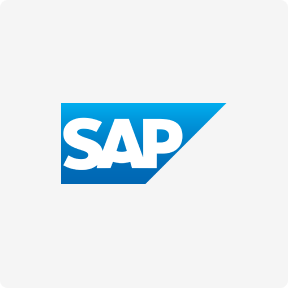An optimal quality risk management strategy is designed to reduce risk to an agreed-upon acceptable level. This acceptable level will depend on many parameters, which should be decided on a case-by-case basis and managed through mitigation tasks. Organizations must ensure that risk management plans do not introduce new or residual risk, and future outcomes must be evaluated and followed up on, with the breakthrough risk being analyzed to see how the process may be improved. Any severe or considerable risk must be managed, along with a contingency and fallback plan if necessary, to monitor and control risk.
- The revision is intended to provide guidance on quality risk management principles and tools that can be applied to different aspects of pharmaceutical quality.
- QRM should be a vital component of an organization’s Quality System and best practices to achieve higher levels of process control and to manage and control risks to product quality and patient safety.
- This research will demonstrate the principles of Quality Risk Management and its practical application in the pharmaceutical business, which will aid in the development and production of high-quality medicinal goods.
- Justification of acceptability as well as residual risk will be completed in the following table.
- 6.5.7 Risk Assessment shall be considered closed when all the risks are mitigated as per action plan up to a desired level of acceptance and reviewed after mitigation.
- The process is similar in principles and methodology to pharmaceutical quality risk management system that but tailored to the needs and requirements of the pharmaceutical industry.
- Validating and verifying your corrective action once is not always enough to minimize the recurrence of the risk.
6.5.8 Whenever risk review shall be performed for logged risk assessment, then version number shall be increased as 01, 02, 03, ……… and so on. An organization is enhanced when leaders can manage and control the inputs and the outputs of an organization, as well as the processes used to produce the outputs. The management engages staff in creating and delivering value whether they are full-time, part-time, outsourced, or in-house.
Quality Risk Management Step 2: Conduct Risk Assessment
A) Failure shall be accepted if RPN is within the specified acceptable level i.e. ≤25. • Individual contributory factor for each potential failure mode should be rated. 3.3.4 Identifications and implementation of additional or new control measures as appropriate. 3.2.4 To assure that a Quality Risk Management process is defined, deployed & reviewed and that adequate resources are available. It makes it easier for businesses to integrate new employees, and thus helps businesses manage growth more seamlessly.
Risk evaluations must consider the strength of the information used to complete the three phases of the risk assessment. Information used to identify risk can include historical data, theoretical analysis, informed opinions and the concerns of those impacted by the decision. Quality risk management, of its own credit, warrants a tertiary degree followed by many years of relevant industry experience before we can call ourselves an expert. Finally, in the ‘Act’ phase, the results drawn from previous phases were acted upon.
SOLUTIONS
Many executives and managers see the wisdom in Aristotle’s quote ‘We are what we repeatedly do”. The output of the risk communication and review step will be an understanding of the risks involved and the controls https://www.globalcloudteam.com/ that have been put in place to mitigate those risks by all stakeholders. The EQMS helps make this process more effective by creating a compliance record showing linking individual risk items to controls.

A Discussion Of The Software Quality Assurance Role The inability to identify who are actually customers limits the ability of software quality assurance engineers in the performance of their duties. Correcting this oversight enables the SQA engineer to provide greater value to customers by assuming the role of auditor as well as that of software and systems engineer. Following the Industrial Revolution and the rise of mass production, it became important to better define and control the quality of products. Originally, the goal of quality was to ensure that engineering requirements were met in final products.
Quality Assurance vs. Quality Control Resources
Once you calculate the residual risk after the corrective action, you can decide whether additional checks are needed. If the risk is still unacceptably high, the problem should be expedited back to the beginning of the risk management process. Once you’ve identified a risk, the next step is to perform a risk assessment. A risk matrix lets you quickly determine whether a risk needs action or whether you can just continue to monitor. Teamcenter Quality, which is part of the Siemens Xcelerator business platform of software, hardware and services , helps you support all of the quality-relevant processes required in the overall product lifecycle.

The quality risk management process is a framework to take proper actions to protect business value, ensure product quality, and keep customers and employees safe from harm. It is a five-step process that includes identifying risks, analyzing the potential risks, prioritizing the risk based on severity, https://www.globalcloudteam.com/glossary/quality-risk/ implementing a solution, and continuously monitoring the risk. By adding quality risk management into your processes, especially at the design and planning phase, you can take actions to ensure that anticipated problems don’t occur or have steps in place to deal with them when they do.
QA and QC Resources
Quality assurance and quality control are two terms that are often used interchangeably. Although similar, there are distinct differences between the two concepts. This page will explain the differences between quality control and quality management, and provide definitions and examples of each.

For example, a papercut might rate a five on the likelihood scale, but a one on the impact scale. Thus, it falls in the acceptable range and you don’t need to do anything. Conversely, a struck-by incident on a newly installed machine might rate a two on the likelihood scale, but a five on the impact scale, falling in the unacceptable range.
What is risk in quality assurance?
For example, providing necessary training to your staff could reduce some high-risk areas to medium. Or adding a few more testing points during the stability campaign may generate stronger support for your product’s shelf life etc. Typically, it is acceptable to evaluate risk by multiplying the consequence rating and likelihood rating.

Its use enables the identification of potential failure modes and assignment of numerical ranking using probability, severity and detectability of the risk. Following are four commonly used risk assessment tools and possible areas of application. Adaptation or combination these methods and other statistical tools, may be applicable for specific event or circumstances. There are many tools and techniques that can be used to help identify risk from hazards and assess the risks. The outcome from the risk assessment must specify a risk owner i.e. a person responsible for ensuring that any actions are implemented and that the risk is managed.
What Is a Quality Management System (QMS)?
Learn about the increasingly tightening connection between risk management and enterprise quality management. With this perspective, think again about what quality risks are and what QRM means. Most of the time, quality exists within the system in specialised but disconnected siloes. It must become part of the enterprise and strategic decision-making process. This can be achieved by using a systems approach and recognising QRM as a part of Enterprise Risk Management . Russell Ackoff – another ‘systems’ guru – tells us that systems can be understood by viewing and analysing them from different perspectives.

